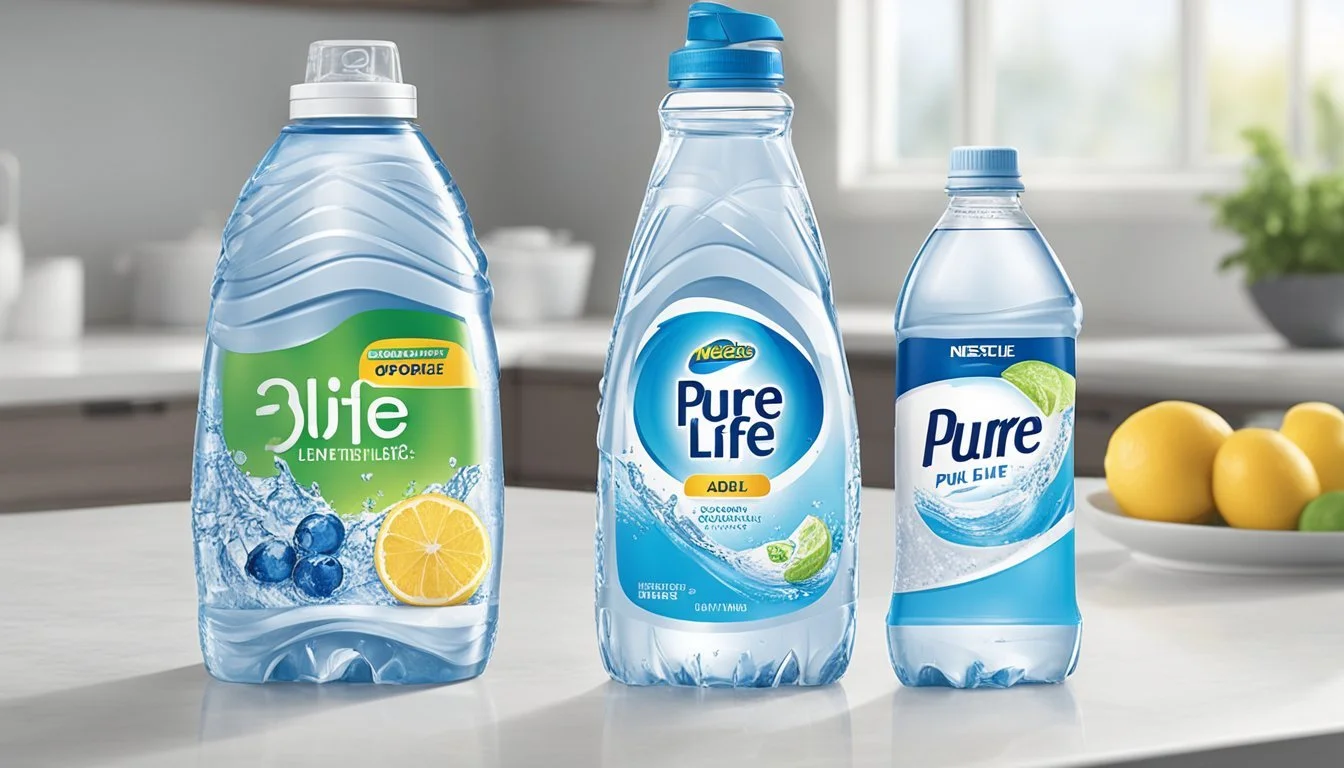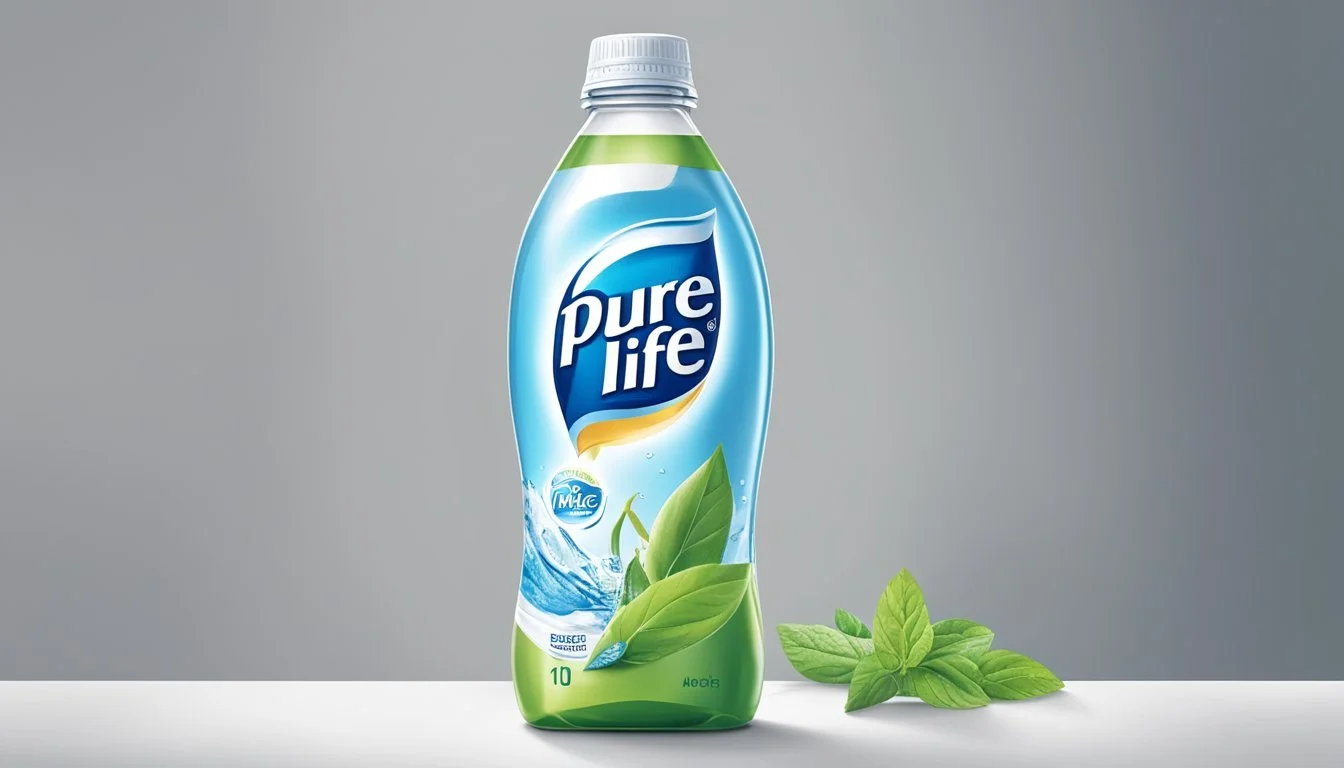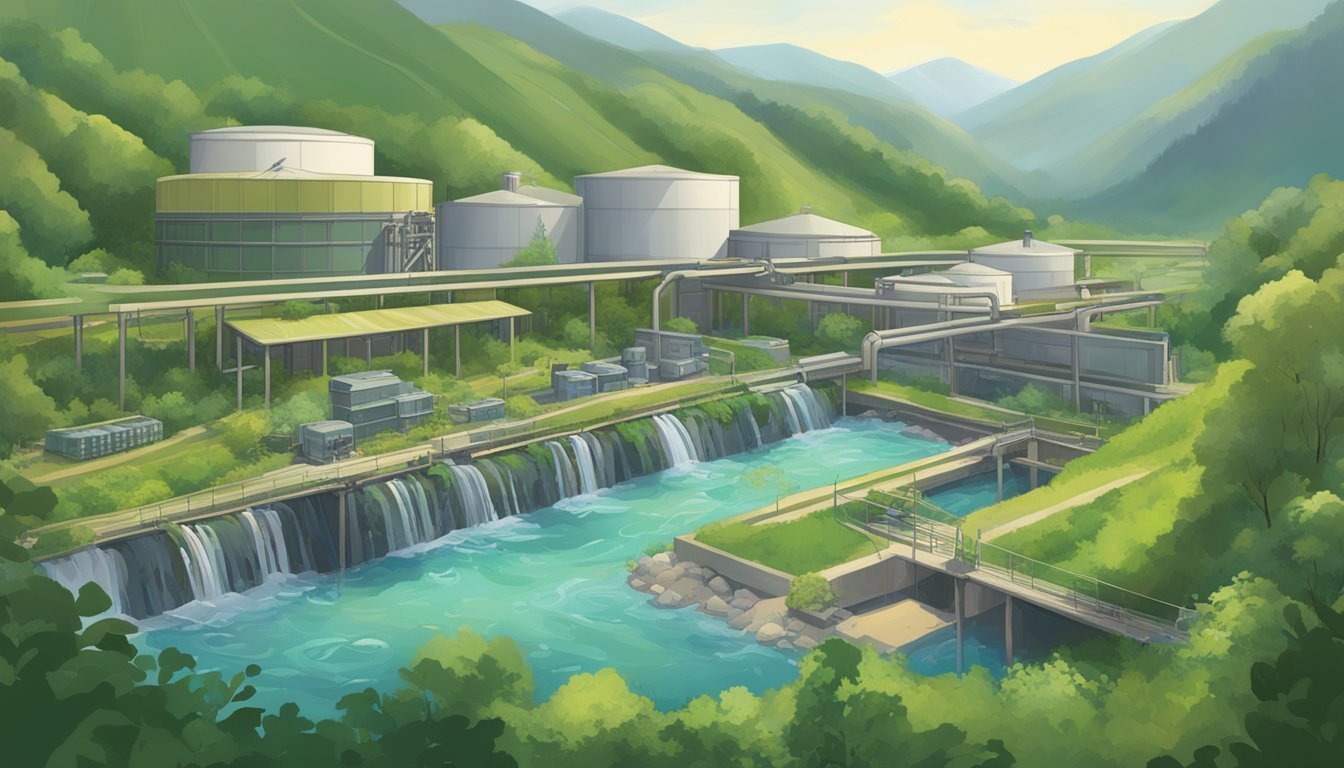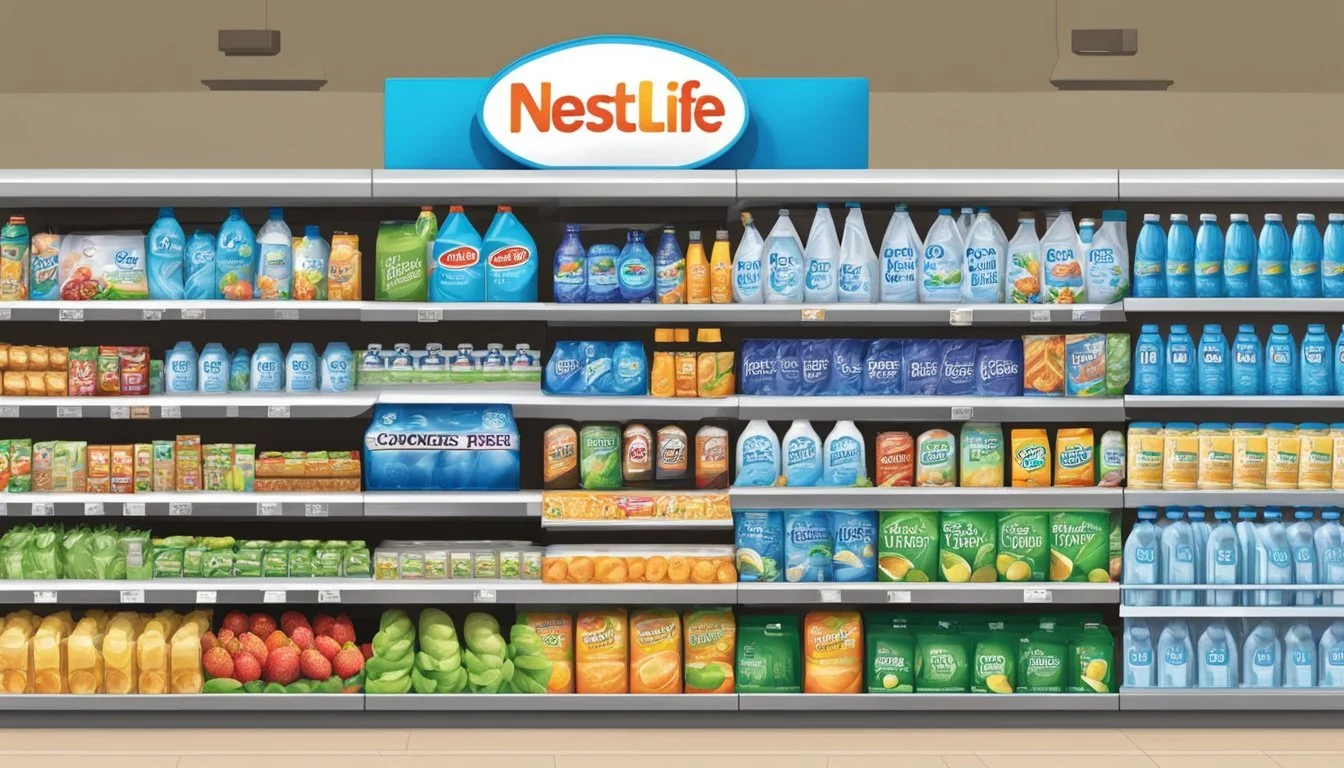Nestle Pure Life vs. Big Win
Comparative Analysis of Bottled Water Brands
Choosing between Nestlé Pure Life and Big Win bottled water can be a challenge for consumers looking for quality, affordability, and taste. Both brands are well-known and readily available, but they differ in certain key aspects that can influence a buyer's decision. Understanding these differences is essential for making an informed choice.
Nestlé Pure Life is recognized globally and touted for its balanced, neutral taste, making it a favorite among those who prefer a subtle flavor. On the other hand, Big Win offers a competitive alternative, often noted for its affordability and decent quality. If taste is the main deciding factor, Nestlé Pure Life stands out with its more universally appealing flavor profile.
Beyond taste, considerations such as price and sourcing methods also play a critical role. Nestlé Pure Life comes from well-managed sources and undergoes multiple stages of purification. Big Win, while cost-effective, might not offer the same level of reassurance regarding its water sourcing and processing techniques.
Understanding Bottled Water
Bottled water comes in various types, each with unique characteristics, health benefits, and safety standards. The following sections examine these aspects in greater detail.
Defining Bottled Water Categories
Bottled water can be categorized into several types such as spring water, purified water, alkaline water, and sparkling water. Spring water comes from natural springs and typically contains minerals. Purified water undergoes extensive filtration processes like distillation, deionization, or reverse osmosis to remove impurities. Alkaline water has a higher pH level than regular water, often above 7, which some believe offers additional health benefits. Sparkling water contains carbon dioxide gas, giving it a fizzy texture, and is often consumed as an alternative to sodas and other carbonated drinks.
Health and Hydration Considerations
Health and hydration are critical when choosing bottled water. The source and treatment process can significantly impact the mineral content and pH levels, affecting taste and health benefits. Spring water often contains essential minerals, such as calcium and magnesium, which are beneficial for bone and heart health. Purified water, being free from contaminants, provides clean drinking water but may lack minerals. Alkaline water’s higher pH level is marketed to neutralize acid in the bloodstream, potentially improving hydration and reducing acid reflux. Sparkling water can aid digestion and offer a pleasant taste without calories, but it might not be suitable for people with certain health issues, like bloating or gastrointestinal discomfort.
Regulatory Standards and Safety
Regulations ensure bottled water safety, requiring stringent standards for sourcing, bottling, and labeling. In many countries, the Food and Drug Administration (FDA) and other regulatory agencies oversee these standards. For instance, spring water must be collected at the spring or through a borehole tapping the underground formation. Purified water must meet certain purification standards, ensuring it is free from chemical and microbiological contaminants. Alkaline and sparkling waters must also meet specific safety and labeling requirements, including accurate pH levels and carbonation standards. These regulations help maintain consistency, quality, and consumer trust in bottled water products.
Nestlé Pure Life and Big Win Overview
Nestlé Pure Life and Big Win represent two well-known bottled water brands in the market. Understanding their histories, sources, and water quality can help consumers make informed choices.
Brand Histories and Market Presence
Nestlé Pure Life was introduced by Nestlé Waters in 1998. It has quickly become one of the most prominent brands worldwide, available in numerous countries. The brand focuses on providing accessible, quality hydration at an affordable price.
Big Win, on the other hand, is a private label bottled water brand found primarily in Rite Aid stores. While it doesn't have the extensive market reach of Nestlé Pure Life, it serves a specific niche of consumers looking for budget-friendly hydration options.
These brands reflect different strategic approaches, with Nestlé leveraging its global presence and Big Win focusing on a more localized market with competitive pricing.
Source and Origin
Nestlé Pure Life sources its water from multiple locations, often blending purified municipal water. The brand emphasizes its rigorous purification processes, which include filtration and adding minerals for taste.
Big Win also typically uses purified municipal water, though specifics about its source can vary. The brand primarily assures basic purification and safety standards, catering to consumers looking for hassle-free, everyday hydration.
The origins reflect the brands' different approaches: Nestlé Pure Life focuses on consistency and taste, while Big Win emphasizes affordability and convenience.
Water Quality and Purity
Nestlé Pure Life is known for its strict quality control measures. The water undergoes several stages of filtration, including reverse osmosis, ozonation, and mineral addition. These processes ensure a clean and neutral taste, making it a popular choice among consumers.
Big Win prioritizes standard filtration methods to deliver safe drinking water. While it may not undergo as many stages of purification as Nestlé Pure Life, it meets basic safety requirements set by regulatory authorities.
The emphasis on purification processes and quality control ensures that Nestlé Pure Life consistently delivers a balanced taste, whereas Big Win emphasizes reliability and cost-effectiveness.
Comparative Analysis of Quality and Taste
This section provides a detailed comparison of Nestlé Pure Life and Big Win bottled water focusing on taste profiles and key water quality metrics.
Taste Profile and Consumer Preferences
Nestlé Pure Life is recognized for its neutral and clean taste. Consumers often describe it as refreshing due to its purification process, which removes impurities while adding minerals for taste. Big Win, on the other hand, tends to have a slightly different taste profile, often described as having a subtle, natural flavor due to its mineral content.
In consumer preference surveys, Nestlé Pure Life frequently scores well for its consistent and reliable taste. Big Win attracts those who prefer a more natural taste, perceiving it as closer to spring water. Both brands have loyal followings, but the preference often hinges on individual taste inclinations.
Water Quality Metrics
Nestlé Pure Life undergoes extensive purification processes, including reverse osmosis and carbon filtration, ensuring it meets high standards of safety and quality. The water is then enhanced with a balance of minerals such as calcium and magnesium to improve taste. This ensures a consistent and clean hydration experience.
Big Win also maintains high water quality standards but relies more on its natural mineral content for taste. The water typically contains essential minerals like calcium, magnesium, and sometimes sodium. Each batch is tested to ensure it meets safety and quality benchmarks, although the exact levels of minerals can vary somewhat compared to the more controlled profile of Nestlé Pure Life.
Manufacturing Processes
The manufacturing processes of Nestlé Pure Life and Big Win water involve steps to ensure purity, quality, and minimal environmental impact. This section breaks down these steps to highlight differences and similarities.
Filtration and Purification
Nestlé Pure Life undergoes a multi-step filtration process that includes reverse osmosis and ultraviolet treatment. The water is filtered multiple times to remove impurities. It’s then enhanced with minerals like magnesium sulfate and potassium chloride for taste.
Big Win also follows a rigorous purification process. Reverse osmosis is a key component, ensuring that contaminants are thoroughly removed. The water is then subjected to ozonation to kill any remaining bacteria or pathogens.
Both brands aim for high purity and a clean, crisp taste through these extensive filtration stages.
Environmental Considerations
Nestlé Pure Life has made efforts toward sustainability by reducing the amount of plastic in their bottles. They utilize lightweight plastic and claim a focus on recycling. Their plants aim to minimize water waste.
Big Win emphasizes environmental impact too, using recycled materials in their packaging. They strive for low carbon emissions in their production process.
Both companies are addressing sustainability, but specific approaches vary, reflecting brand philosophies and marketing strategies.
Bottling and Packaging
Nestlé Pure Life packages its water in plastic bottles designed to be lightweight. Their bottling involves a high-speed automated process to maintain hygiene and efficiency. Each bottle is sealed under stringent quality control measures.
Big Win uses similar automated bottling technology. Their packaging includes recycled plastic materials, underlining their commitment to environmental stewardship. The bottles are also designed for easy recycling.
Both brands prioritize hygiene and efficiency in bottling, employing advanced technology to deliver safe drinking water to consumers.
These detailed manufacturing processes underscore the importance both companies place on quality and environmental responsibility.
Health and Environmental Impact
Evaluating the health implications of bottled water involves assessing the levels of contaminants and chemical residues. Environmental impact focuses primarily on plastic usage and overall sustainability practices.
Analysis of Contaminants
Nestlé Pure Life exhibits transparency by disclosing its geographic water source and treatment method. This brand undergoes multiple filtration processes to remove impurities, ensuring it meets safety standards. Despite these measures, studies have shown that bottled water can still contain trace contaminants such as caffeine, acetaminophen, and plastic-derived chemicals.
Big Win, a lesser-known brand, may not provide the same level of detailed data regarding its water source and purification processes. Consumers should remain cautious and seek out water quality reports. The health implications depend significantly on the brand's filtration rigor and transparency about contaminants.
Plastic Use and Sustainability
Nestlé Pure Life is produced by the world’s largest bottled water company, Nestlé. This brand is known for its commitment to sustainability initiatives. Nestlé has been involved in creating bottles from recycled plastics and aims to achieve 100% recyclable or reusable packaging by 2025.
Big Win’s sustainability efforts are less prominent. The brand's practices regarding the use of single-use plastics and recycling initiatives are not as well-documented. Consumers concerned with environmental impact should investigate the company's approach to plastic waste and sustainability efforts to make an informed choice.
Reducing plastic usage and promoting recycling are crucial steps towards mitigating environmental degradation caused by bottled water.
Consumer Accessibility and Convenience
Both Nestlé Pure Life and Big Win focus on making their bottled water easily accessible and convenient for consumers. Their approaches to pricing and packaging play a critical role in this effort.
Price and Availability
Nestlé Pure Life maintains a competitive price range, often available in bulk options like 24-packs. This can be cost-effective, especially for families or workplaces. Nestlé Pure Life water is widely available in major supermarkets, convenience stores, and online platforms, ensuring consumers can purchase it almost anywhere.
Big Win also offers bottled water at competitive prices and is typically found in supermarket chains, particularly those under the Rite Aid banner. Big Win may not have as extensive a reach as Nestlé Pure Life but is accessible in regions where Rite Aid stores are prevalent. The pricing strategy is attractive for budget-conscious consumers seeking quality water.
Packaging Variants
Nestlé Pure Life offers a range of packaging options. These include small bottles (8 oz), standard bottles (16.9 oz), and larger sizes like 1-gallon jugs. The variety caters to different needs, from single servings for on-the-go hydration to larger quantities for home or office use.
Big Win provides diverse packaging as well, although options might be slightly less varied than Nestlé Pure Life. Typical packaging includes standard 16.9 oz bottles, often sold in multi-packs. The convenience factor here is high, especially for consumers looking for easily portable and storable options.
Both brands aim to meet consumer needs through accessible pricing and versatile packaging, enhancing their convenience and appeal.
Industry Insights and Consumer Trends
The bottled water industry is shaped by major players and continuous innovation aimed at meeting evolving consumer preferences. Companies strive to offer products that cater to taste, safety, and unique branding.
Major Players and Competitors
The bottled water market features prominent names such as Coca-Cola's Dasani, PepsiCo's Aquafina, and Nestlé's Pure Life. Other significant brands include Fiji, Voss, smartwater, Poland Spring, and Perrier. These companies utilize distinct sourcing methods and marketing strategies to appeal to diverse consumer bases. For instance, Dasani adds minerals to enhance taste, while Icelandic Glacial emphasizes purity from Iceland’s natural springs.
Regional preferences also play a crucial role. For example, Zephyrhills sources from protected springs in Florida, catering mainly to the state's market. Ozarka targets Texas residents with water sourced from local springs. International players like Evian and San Pellegrino offer premium experiences, often associated with fine dining and higher price points.
Innovation in Bottled Water Industry
Technological advancements and consumer demand drive innovation in the bottled water sector. Companies experiment with sustainable packaging solutions, such as Coca-Cola's plant-based bottles and PepsiCo’s recycled materials. Additionally, brands focus on enhanced water products, offering functional benefits like added electrolytes and vitamins.
New entrants like Core Hydration and Gatorade’s rehydration solutions aim to attract health-conscious consumers. Flavored waters and sparkling options from Perrier and San Pellegrino offer variety, targeting those seeking alternatives to sugary drinks. Environmental concerns prompt brands to adopt eco-friendly practices, including reduced plastic use and improved recycling programs to align with consumer values on sustainability.
Final Verdict and Recommendations
When comparing Nestlé Pure Life and Big Win, both brands have distinct features that may appeal to different consumer preferences.
Taste:
Nestlé Pure Life: Known for its neutral and balanced taste due to its multi-stage filtration process.
Big Win: Often has a slightly different taste profile, although specific details may vary depending on the bottling source.
Quality and Safety:
Nestlé Pure Life follows multiple-stage filtration and stringent quality checks.
Big Win also adheres to safety standards, but the specific processes are less publicized.
Brand Reputation:
Nestlé Pure Life: A well-known international brand with a broad consumer base.
Big Win: More regionally focused, with a reputation for providing value.
Price:
Nestlé Pure Life: Generally more expensive but often sold in larger quantities, potentially lowering the cost per bottle.
Big Win: Typically marketed as a budget-friendly alternative.
Feature Nestlé Pure Life Big Win Taste Neutral and balanced Varies by source Quality Checks Multiple-stage filtration Standard protocols Reputation Internationally recognized Regionally known Price Higher, bulk options Budget-friendly
Recommendations:
For those who prioritize taste and brand reputation, Nestlé Pure Life is a strong choice.
For budget-conscious consumers, Big Win offers a cost-effective option without major compromises in quality.
Consumers can choose based on what aligns best with their preferences and needs.
More About Nestle Pure Life
Acqua Panna vs Nestle Pure Life: Which Bottled Water is Better?
Aquafina vs Nestle Pure Life: Which Bottled Water is Better?
Arrowhead vs Nestle Pure Life: Which Bottled Water is Better?
Boxed Water vs Nestle Pure Life: Which Bottled Water is Better?
Core Hydration vs Nestle Pure Life: Which Bottled Water is Better?
Deer Park vs Nestle Pure Life: Which Bottled Water is Better?
Essentia vs Nestle Pure Life: Which Bottled Water is Better?
Ice Mountain vs Nestle Pure Life: Which Bottled Water is Better?
Icelandic Glacial vs Nestle Pure Life: Which Bottled Water is Better?
Just Water vs Nestle Pure Life: Which Bottled Water is Better?
Mountain Valley Spring Water vs Nestle Pure Life: Which Bottled Water is Better?
Nestle Pure Life vs 1907water: Which Bottled Water is Better?
Nestle Pure Life vs 7-Select: Which Bottled Water is Better?
Nestle Pure Life vs Alkaline88: Which Bottled Water is Better?
Nestle Pure Life vs Antipodes: Which Bottled Water is Better?
Nestle Pure Life vs Aqua Carpatica: Which Bottled Water is Better?
Nestle Pure Life vs Big Chill: Which Bottled Water is Better?
Nestle Pure Life vs BodyArmor: Which Bottled Water is Better?
Nestle Pure Life vs Cascade Mountain: Which Bottled Water is Better?
Nestle Pure Life vs Castle Rock: Which Bottled Water is Better?
Nestle Pure Life vs CBD Living: Which Bottled Water is Better?
Nestle Pure Life vs Crystal Geyser: Which Bottled Water is Better?
Nestle Pure Life vs Crystal Lake: Which Bottled Water is Better?
Nestle Pure Life vs Essence pH10: Which Bottled Water is Better?
Nestle Pure Life vs Hawaii Volcanic: Which Bottled Water is Better?
Nestle Pure Life vs Hawaiian Springs: Which Bottled Water is Better?
Nestle Pure Life vs Kirkland Signature: Which Bottled Water is Better?
Nestle Pure Life vs Liquid Death: Which Bottled Water is Better?
Nestle Pure Life vs Mananalu: Which Bottled Water is Better?
Nestle Pure Life vs Open Water: Which Bottled Water is Better?
Nestle Pure Life vs Poland Spring: Which Bottled Water is Better?
Nestle Pure Life vs Proud Source: Which Bottled Water is Better?
Nestle Pure Life vs Pure Life: Which Bottled Water is Better?
Nestle Pure Life vs Purely Sedona: Which Bottled Water is Better?
Nestle Pure Life vs Refreshe: Which Bottled Water is Better?
Nestle Pure Life vs Richard's Rainwater: Which Bottled Water is Better?
Nestle Pure Life vs San Pellegrino: Which Bottled Water is Better?
Nestle Pure Life vs Simple Truth: Which Bottled Water is Better?
Nestle Pure Life vs Smartwater: Which Bottled Water is Better?
Nestle Pure Life vs Solan de Cabras: Which Bottled Water is Better?
Nestle Pure Life vs Talking Rain AQA: Which Bottled Water is Better?
Nestle Pure Life vs The Well: Which Bottled Water is Better?
Nestle Pure Life vs Topo Chico: Which Bottled Water is Better?
Nestle Pure Life vs Tru Alka: Which Bottled Water is Better?
Nestle Pure Life vs Weird Water: Which Bottled Water is Better?
Nestle Pure Life vs Whole Foods 365: Which Bottled Water is Better?
Nestle Pure Life vs Whole Foods Italian Still Mineral water: Which Bottled Water is Better?
Nestle Pure Life vs Zephyrhills: Which Bottled Water is Better?
More About Big Win
Big Win vs Kirkland Signature: Which Bottled Water is Better?
Icelandic Glacial vs Big Win: Which Bottled Water is Better?
Mountain Valley Spring Water vs Big Win: Which Bottled Water is Better?
Richard's Rainwater vs Big Win: Which Bottled Water is Better?
Whole Foods Italian Still Mineral water vs Big Win: Which Bottled Water is Better?










